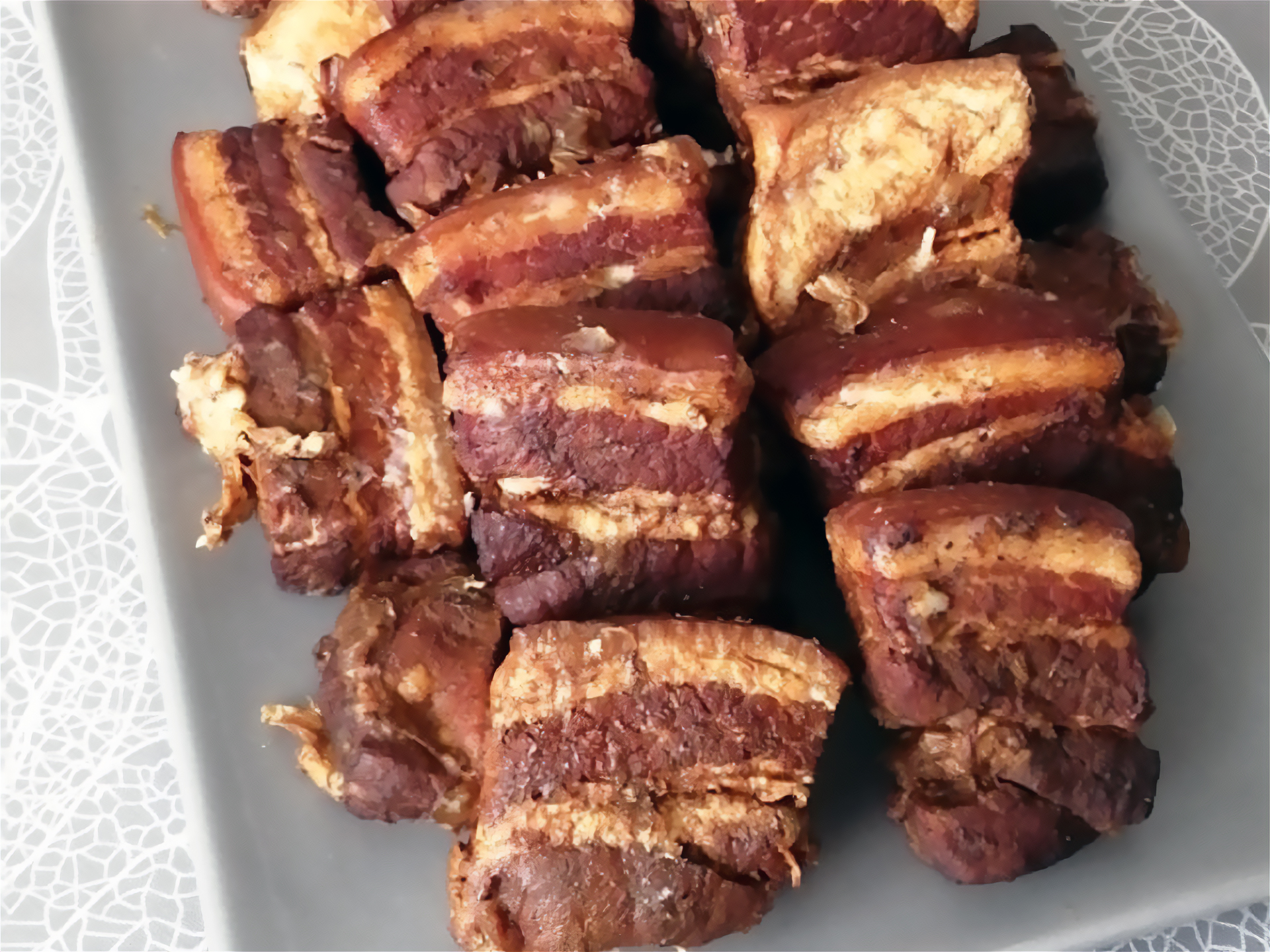The easy recipe for the famous Tours rillons to enjoy at aperitif time
Rillons are an iconic charcuterie from Touraine: cubes of pork belly slowly confited in their own fat until soft, tender, and bursting with flavour. Enjoy them with drinks, on a mixed salad, or as a savoury garnish.
This simple yet sophisticated recipe is a culinary jewel proudly guarded by the people of Tours.
The History of Rillons
Rillons were born on Touraine farms. After the annual pig slaughter, farmers preserved the belly by cutting it into pieces, removing the rind, and gently confiting the meat in its own fat. The finished rillons were packed into earthenware crocks and covered with the same fat for safekeeping.

Over the years, the rillon recipe has been perfected. Seasoned with thyme, bay leaf, pepper, and sometimes a splash of white wine or marc, today’s rillons deliver layers of flavour and a delicate texture—golden on the outside, rosy within.
Their elegance sets them apart from the rillauds, the rind-on version from nearby Anjou. This friendly rivalry between Tours rillons and Angers rillauds has fuelled a delicious competition for centuries.
Tips for Perfect Homemade Rillons
Choose quality meat: Select well-marbled pork belly with an ideal balance of lean and fat.
Cut carefully: Remove the rind for an ultra-tender result and better flavour infusion—though it’s not compulsory.

Master the cooking: Cook slowly at a low temperature to achieve rillons that are meltingly soft inside and lightly caramelised outside.
Use balanced aromatics: Thyme, bay leaf, and a dash of white wine add delicate notes without overpowering the meat’s natural flavour.
Submerge them in fat for preservation: For longer storage, pack the rillons in their filtered cooking fat; they’ll keep perfectly for several weeks.

Authentic Tours Rillons
Ingredients
- 1.6 kg pork belly cut into 8 pieces, each about 6 x 12 cm
- 500 ml Vouvray wine sparkling
- 400 g duck fat or lard
- 2 tablespoons chicory powdered
- 1 bay leaf
- 3 sprigs of thyme
- 10 g Guérande salt for rubbing
- 3 g black pepper freshly ground
- 3 g Espelette pepper
- 0.5 teaspoon Patrelle
- 10 g Guérande salt for cooking
Procédé
- Remove the rind from each pork belly piece. Rub them with 10 g of salt, the crushed thyme and bay leaf, and the Espelette pepper. Arrange the seasoned pork in a dish.1.6 kg pork belly, 1 bay leaf, 3 sprigs of thyme, 10 g Guérande salt, 3 g Espelette pepper
- Season all sides with pepper. Cover with plastic wrap and refrigerate for 24 hours.3 g black pepper
- Melt 1 tablespoon of duck fat in a Dutch oven or large sauté pan over medium heat. Add the pork pieces and brown for 5 minutes.
- Pour in the Vouvray and the teaspoon of Patrelle. Add the remaining duck fat and 10 g salt. Cover, reduce the heat, and gently simmer for 1 hour 30 minutes, turning the pork occasionally.500 ml Vouvray wine, 400 g duck fat, 10 g Guérande salt, 0.5 teaspoon Patrelle
- Sprinkle in the chicory and stir to deepen the color of the rillons without altering their flavor.2 tablespoons chicory
- Leave the pork to confit, uncovered, over low heat for 2 hours, basting regularly with the rendered fat.
- Transfer the rillons to a rack to drain, then let them cool completely before refrigerating.
- Strain the warm fat through a fine sieve into an airtight container. Add a glass of cold water, seal, and refrigerate.
- After a few hours, lift off the solidified fat. Poke a hole through it and pour off the water beneath.
Storage
- Pack the rillons into a jar for up to 20 days’ storage. Gently rewarm the filtered fat and pour it over the meat. Seal and refrigerate.
Serving
- Slice the rillons thinly and serve them cold as part of an appetizer platter or a mixed salad. They’re also delicious warm—try them in a tomato tart.

